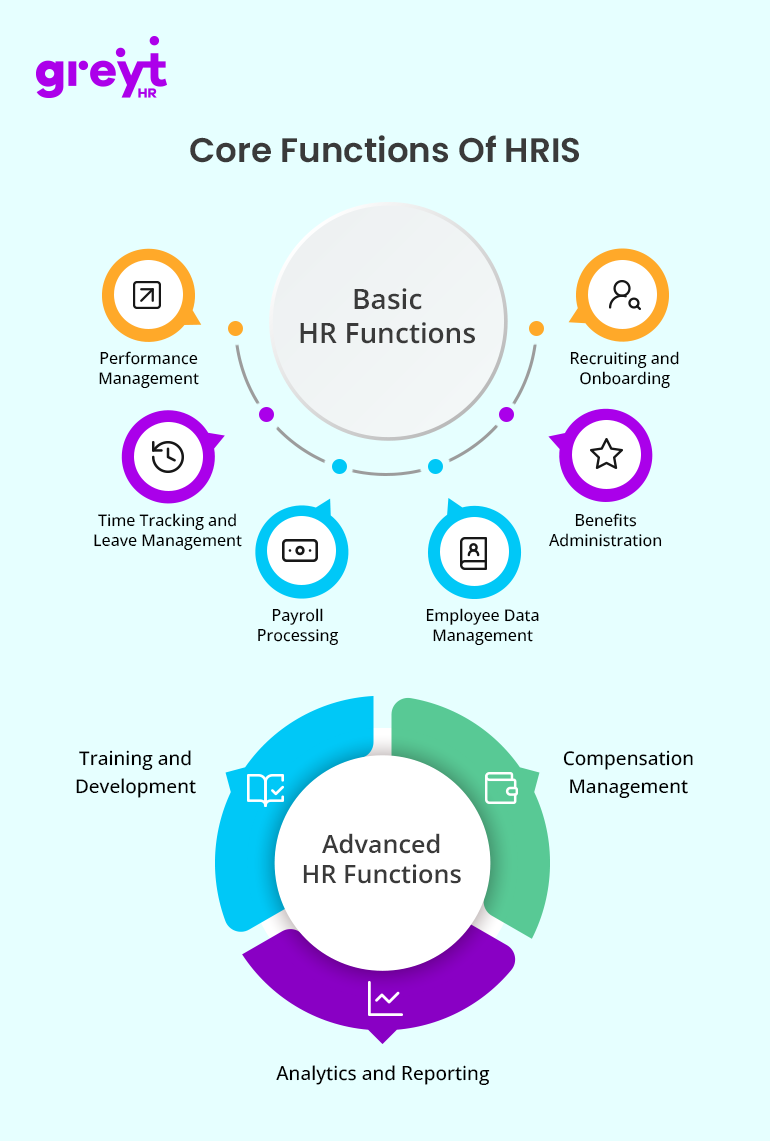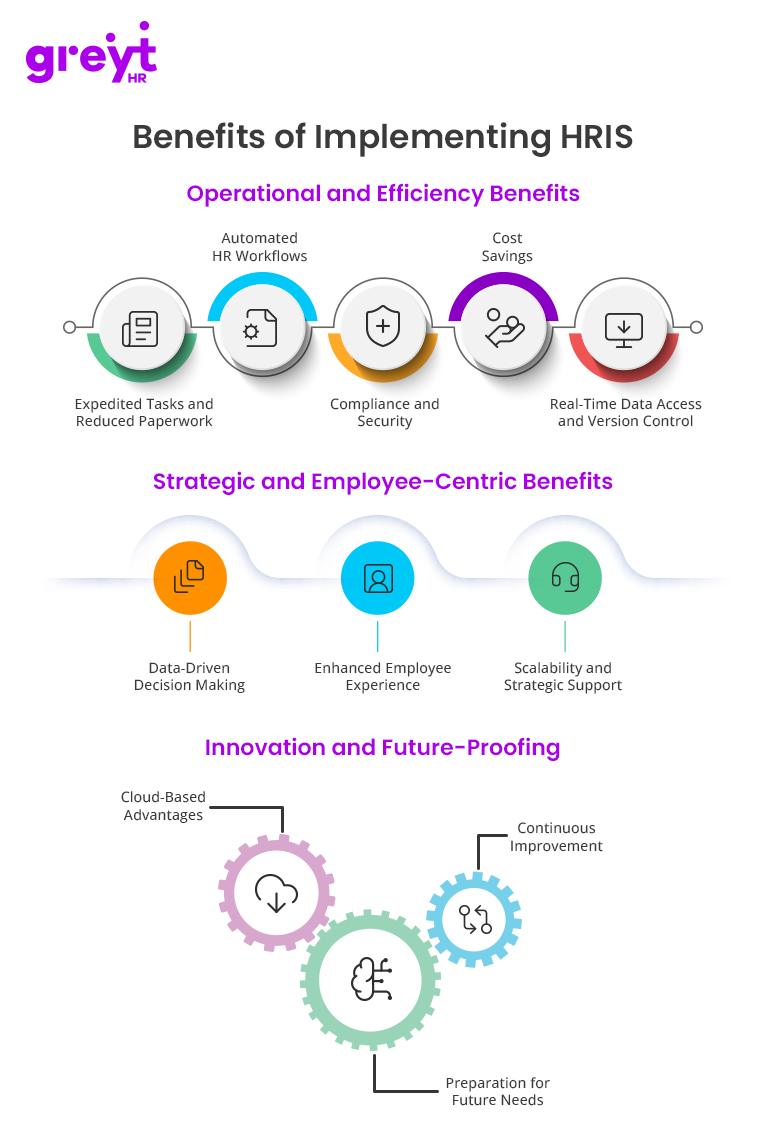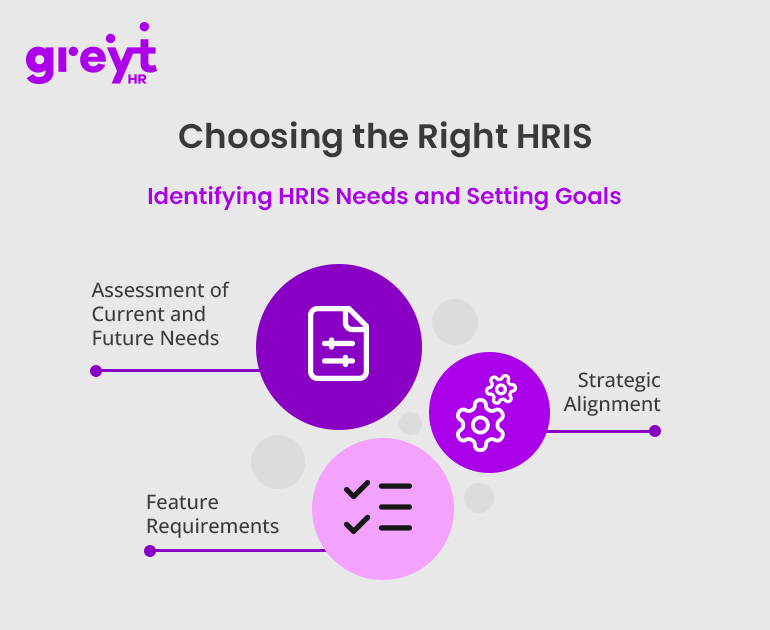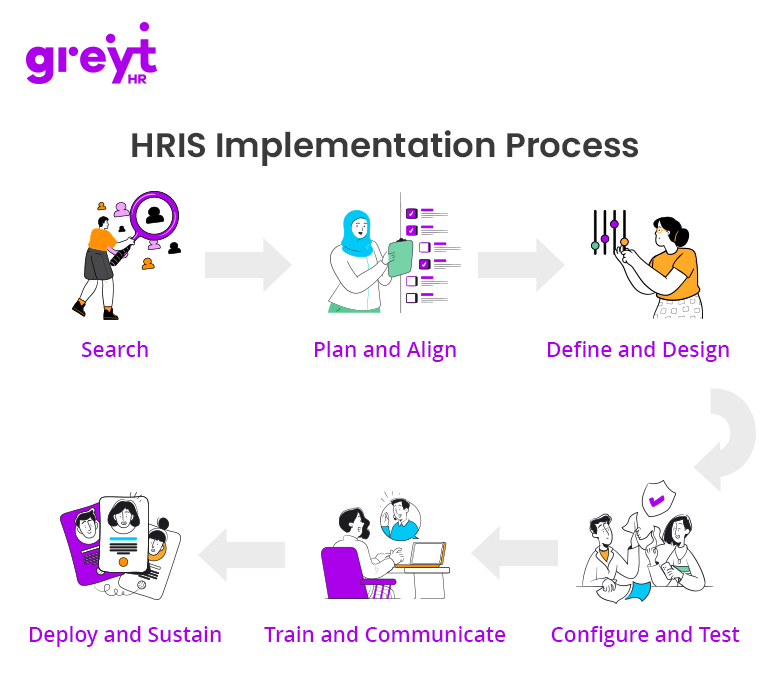Let’s dive into something revolutionary for modern businesses—HRIS, or Human Resources Information Systems. Picture a scenario where your organization is juggling various employee details, payroll, recruitment processes, and more. Traditionally, this can become quite chaotic. However, HRIS brings a significant transformation.
So, what is HRIS? Think of it as an advanced software solution that consolidates all employee-related data into one platform. It doesn’t just store information—it organizes, processes, and provides meaningful insights. This system has become indispensable for HR teams, acting like a well-organized digital brain that facilitates everything from recruitment and payroll to employee self-service portals.
Why is HRIS crucial? Primarily, it automates many labor-intensive HR tasks, eliminating the need for manual data entry and file searches. This makes processes more efficient and supports better decision-making by providing organized data for trend analysis and strategic improvements.
In this discussion, we’ll explore the key functions of HRIS, its benefits, and how to choose the right system for your company. We’ll also cover implementation tips and strategies to maximize its value. Plus, we’ll take a look at future trends in HRIS technology.
By the end, you’ll have a thorough understanding of how HRIS can transform your HR practices. Let’s get started!
Table of Contents
- 1. Human Resource Information System (HRIS)
- 2. Core Functions of an HRIS
- 3. Benefits of Implementing an HRIS
- 4. Choosing the Right HRIS
- 5. HRIS Implementation Process
- 6. Maximizing the Value of Your HRIS
- 7. Conclusion
- 8. FAQ
Human Resource Information System (HRIS)
A Human Resource Information System (HRIS) is a sophisticated software application designed to address the fundamental HR requirements of businesses. It enhances productivity by managing detailed employee information and HR-related policies. By streamlining interactions between employees and organizations, HRIS enables HR professionals to concentrate on strategic and high-value activities.
Key Features of HRIS
- Employee Data Management: Centralizes and maintains comprehensive employee records.
- Recruitment and Onboarding: Facilitates the hiring process and integrates new employees.
- Payroll Processing: Automates payroll calculations and disbursements.
- Time and Attendance Management: Tracks employee hours and attendance.
- Benefits Administration: Manages employee benefits programs.
- Compliance and Reporting: Ensures adherence to regulations and generates necessary reports.
- Analytics and Reports: Provides data analysis and reporting capabilities.
- Employee Self-Service: Allows employees to access and manage their personal information.
Primary Users of HRIS
- HR Administrators
- Payroll Specialists
- Talent Management Specialists
- Recruiters
Challenges and Cloud Benefits
Challenges:
- Ensuring data privacy and security
- Adhering to regulations and compliance
- Minimizing business disruption during implementation
Cloud Benefits:
- Easy scalability to accommodate business growth
- Greater control over operational versus capital expenditures
- Quick access to innovations, enhancing operational efficiency
Integrating HRIS into organizational operations offers numerous advantages, including improved record-keeping, enhanced compliance, and increased efficiency in HR processes. It supports essential HR functions such as payroll, benefits administration, and employee self-service, thereby contributing to operational efficiency and strategic planning.
Core Functions of an HRIS
HRIS systems are packed with features that streamline HR tasks, improve data management, and enhance overall organizational efficiency. These systems support both fundamental and advanced HR functions, ensuring smooth operations across the board.
Basic HR Functions:
Employee Data Management: Centralizes all employee information, including demographics, employment history, job roles, and tax withholdings, ensuring easy access and management.
Payroll Processing: Automates pay schedules, integrates time and attendance data, and allows for self-entered leave information, simplifying the payroll process.
Benefits Administration: Offers self-service options for employees to manage their benefits, enhancing employee engagement and satisfaction.
Time Tracking and Leave Management: Facilitates accurate time tracking and efficient management of leave requests, promoting self-sufficiency among employees.
Performance Management: Supports goal setting, self-assessments, and feedback through surveys, fostering a culture of continuous improvement and participation.
Recruiting and Onboarding: Streamlines the recruitment process, from posting jobs to processing new hires, ensuring a smooth transition for candidates into the organization.
Advanced HR Functions:
Training and Development: Tracks employee qualifications and integrates with Learning Management Systems (LMS) to support ongoing employee development.
Compensation Management: Manages salary structures and benefits packages, aligning compensation strategies with organizational goals.
Analytics and Reporting: Provides comprehensive reporting tools and customizable dashboards for insightful HR analytics, aiding in strategic decision-making.
Operational Benefits:
Reduced Paperwork: Eliminates the need for paper files by storing all employee data in a centralized repository, improving data accuracy and accessibility.
Compliance and Security: Ensures adherence to regulatory requirements and secures sensitive employee data, mitigating legal risks.
Integration and Scalability: Seamlessly integrates with other business systems and scales according to organizational growth, ensuring long-term viability.
By leveraging these functionalities, HRIS systems serve as comprehensive tools for managing everything from basic administrative tasks to more strategic HR initiatives. This makes them invaluable for improving efficiency, maintaining compliance, and enhancing the overall employee experience.

Benefits of Implementing an HRIS
Introducing an HRIS into your company can transform how HR departments and employees function daily. The advantages are substantial, ranging from operational improvements to strategic enhancements.
Operational and Efficiency Benefits:
Expedited Tasks and Reduced Paperwork: HRIS software significantly speeds up HR-related tasks and diminishes the reliance on physical paperwork, making processes more efficient and eco-friendly.
Automated HR Workflows: From onboarding to benefits administration, HRIS can automate repetitive tasks, freeing up HR professionals to focus on more strategic initiatives.
Real-Time Data Access and Version Control: Authorized users gain access to up-to-date information, ensuring that everyone is working with the latest data. This is particularly useful for managing document versions and syncing changes across the organization.
Cost Savings: Through centralization of data, automation, and streamlined processes, organizations can achieve significant cost reductions.
Compliance and Security: Built-in compliance features and enhanced data security protocols help businesses adhere to industry regulations and protect sensitive employee information.
Strategic and Employee-Centric Benefits:
Data-Driven Decision Making: HRIS provides comprehensive and accurate insights, enabling HR managers to make informed decisions that align with the overall business strategy.
Enhanced Employee Experience: Employees can self-manage their personal information, benefits, and leave requests, fostering a culture of empowerment and engagement.
Scalability and Strategic Support: As organizations grow, HRIS can adapt to changing needs, adding modules and features that support more strategic HR functions. This scalability ensures that HRIS remains a valuable tool for both operational efficiency and strategic planning.
Innovation and Future-Proofing:
Cloud-Based Advantages: Cloud-based HRIS solutions offer scalability, cost savings, and reduced IT support needs compared to traditional on-premise systems.
Continuous Improvement: Customers benefit from routine updates and the addition of new features over time, which can improve system performance and user experience.
Preparation for Future Needs: With the ability to add modules as needed, HRIS systems are not just about managing the present but are also an investment in the organization’s future, ensuring readiness for more complex, interconnected workforce demands.
These benefits illustrate how an HRIS goes beyond simplifying HR tasks—it plays a crucial role in achieving broader organizational objectives and preparing for future growth in a rapidly changing business environment.

Choosing the Right HRIS
Selecting the right HRIS involves understanding your current needs, anticipating future requirements, and thoroughly researching market options. Here’s a guide to help you navigate the selection process effectively.
Identifying HRIS Needs and Setting Goals:
Assessment of Current and Future Needs: Clearly define what your organization aims to achieve with the new HRIS. Consider integration with existing systems like ATS and payroll, and identify limitations of the current HRIS setup.
Strategic Alignment: Ensure the chosen HRIS aligns with the organization’s strategic plans and the HR department’s responsibilities, including payroll, recruiting, and benefits administration.
Feature Requirements: Distinguish between essential features and desirable additions. Common modules include recruiting, benefits administration, payroll, and employee self-service (ESS).
Selection Process:
Research and Request for Proposal (RFP):
- Begin with research, connecting with industry peers and reviewing HR blogs for recommended vendors.
- Send out a detailed RFP to shortlisted vendors to gather information on their offerings.
System Evaluation:
- Organize a project committee beyond the HR department to evaluate the systems.
- Develop a spreadsheet-rating matrix to compare the offerings and limitations of each product.
- Schedule demonstrations with vendors and create a checklist to ensure all important aspects are covered.
Decision Making:
- Evaluate the service provided during the RFP and demonstration process.
- Conduct reference checks and, if possible, onsite visits to see the system in action.
- Secure a service contract that includes ongoing maintenance, updates, and compatibility assurances.

HRIS Implementation Process
Successfully implementing an HRIS requires a systematic approach tailored to your business goals and specific needs. Here’s a six-step guide to ensure a smooth transition and maximize the benefits of your HRIS:
Search: Start by analyzing your organization’s specific needs. Look at your current processes and think about what you’ll need in the future. Identify which HR tasks need automation and pinpoint any pain points in your existing system.
Plan and Align: Ensure your HRIS aligns with your company’s overall goals. Get input from key people across different departments like payroll, talent acquisition, HR, training, IT, and operations. Create a project timeline and define clear objectives.
Define and Design: Configure workflows, processes, security settings, and forms to fit your company’s needs. Consider system scalability, compliance requirements, and long-term HR goals. Identify gaps or inefficiencies in your current HR processes that the HRIS can fix.
Configure and Test: Build out the workflows and test the system thoroughly. Get feedback from the project team and other employees, especially those who might be more resistant to change. Ensure data integrity during migration and set up strong data security measures
Train and Communicate: Develop training programs tailored to different employee roles to make the transition smoother. Offer ongoing training to keep everyone updated on new features. Designate ‘change champions’ within your organization to promote the HRIS and show its benefits.
Deploy and Sustain: Roll out the HRIS and start enjoying the benefits. Keep communication channels open for feedback from users. Ensure employees are well-prepared to use the system and regularly assess the HRIS to ensure it meets your evolving needs.
Throughout this process, maintaining open communication, involving stakeholders at all levels, and prioritizing security and compliance are crucial. By adhering to these steps, you can manage the complexities of HRIS implementation and ensure the system meets both your current and future requirements.
Maximizing the Value of Your HRIS
To truly harness the power of your HRIS, it’s essential to manage and utilize it strategically. Here are some key practices to maximize its value:
Customization and Regular Updates:
- Customize for Your Needs: Tailor the HRIS to fit exactly what your organization needs. Ensure it supports your specific HR processes and workflows.
- Stay Updated: Keep the system fresh with regular updates and maintenance. This keeps everything running smoothly and secure.
Data Management and Security:
Keep It Clean: Regularly check and clean up your HRIS data to ensure it’s accurate and complete. This is crucial for making good decisions.
Lock It Down: Implement strong security measures to protect sensitive employee information. Compliance is key here, and you want to avoid any data breaches.
Training, Support, and Performance Monitoring:
Train Up: Ensure everyone knows how to use the HRIS with comprehensive training programs and ongoing support. Good customer service is a must.
Keep an Eye Out: Monitor how the HRIS is performing and look for ways to make it even better. You want it to be efficient and effective.
User Feedback: Regularly gather feedback from users to identify any issues or areas for improvement. This can help you address problems quickly and ensure the system meets user needs.
Performance Metrics: Establish key performance indicators (KPIs) to measure the effectiveness of the HRIS. Track metrics such as user adoption rates, data accuracy, and time saved on HR processes to evaluate the system’s impact.
Integration with Other Systems:
Seamless Integration: Ensure your HRIS integrates smoothly with other business systems like payroll, accounting, and time tracking software. This minimizes data silos and enhances overall efficiency.
API Utilization: Leverage APIs to enable data exchange between your HRIS and other systems, ensuring real-time updates and consistency across platforms.
Leveraging Advanced Features:
Analytics and Reporting: Use the advanced analytics and reporting features of your HRIS to gain insights into workforce trends, employee performance, and HR metrics. These insights can inform strategic decisions.
Talent Management: Utilize talent management modules to support employee development, succession planning, and performance management. This helps in retaining top talent and fostering a culture of growth.
Employee Self-Service: Encourage employees to use self-service features for tasks like updating personal information, requesting time off, and accessing pay stubs. This not only empowers employees but also reduces the administrative burden on HR.
Continuous Improvement:
Periodic Reviews: Regularly review your HRIS to ensure it continues to meet your evolving business needs. Make adjustments as necessary to accommodate organizational changes and new HR strategies.
Stay Informed: Keep abreast of the latest HRIS trends and technological advancements. Attend industry conferences, webinars, and training sessions to stay informed about new features and best practices.
Feedback Loop: Establish a continuous feedback loop with your HRIS provider to communicate any challenges or enhancement requests. This collaborative approach can lead to system improvements and better support.
By following these best practices, you can maximize the value of your HRIS, ensuring it remains a critical tool for managing HR processes, improving efficiency, and supporting strategic decision-making.

Conclusion
Implementing and effectively utilizing an HRIS is a transformative step for any organization. It streamlines HR processes, enhances data management, and supports strategic decision-making, all while improving the overall employee experience. By carefully selecting the right HRIS, following a structured implementation process, and continuously optimizing its use, companies can achieve significant operational and strategic benefits.
FAQ
What makes the importance of HRIS essential for HR departments?
The importance of HRIS for HR departments lies in its ability to automate tasks and provide real-time data, enhancing efficiency and reducing administrative workload.
What role does human resources and its importance play in employee satisfaction?
Human resources and its importance are crucial for employee satisfaction as HR ensures proper support, career development, and a positive work environment, leading to higher retention and morale.
How does understanding the importance of HRIS benefit a business?
Understanding the importance of HRIS benefits a business by highlighting how this system improves HR efficiency, reduces administrative costs, and enhances data management, leading to better strategic decisions and operational efficiency.
What are the key reasons for emphasizing human resources and its importance in a company?
Emphasizing human resources and its importance is key because HR manages recruitment, employee development, and compliance, which are vital for maintaining a productive, engaged workforce and supporting organizational growth.
What is the significance of optimizing the HR process for business success?
Optimizing the HR process is significant for business success as it streamlines recruitment, onboarding, and performance management, leading to improved efficiency, reduced errors, and better employee satisfaction.
How does a Human Resource Information System (HRIS) enhance HR functions?
A Human Resource Information System (HRIS) enhances HR functions by automating administrative tasks, centralizing employee data, and providing actionable insights, which improves decision-making and overall HR efficiency.
